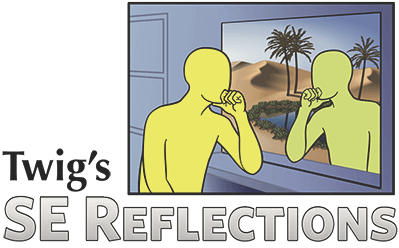An unusually fun and helpful 2-Day workshop for Helping Professionals
“What I really appreciated: Your Enthusiasm.”

Janice Castelbaum
Oregon based SEP“Twig is a master of the nervous system and a master of play!”

Erica Gaeta
New York based SEPTrauma Informed – Trauma Literate – Trauma Fluent
2 days of insightful theory, practice, social engagement, and fun.
We’ll alternate between play and presentation which will keep us informed, reinforce the lessons and keep us laughing.
Created specifically for helping professionals.
This is about supporting helping professionals in their personhood and profession to be more at ease in themselves and successful in their work.
Made to cultivate your confidence during client interactions.
Signaling safety is a critical feature needed to aid traumatized people out of the stress response, your confidence is a safety signal and we’ll explore how to develop more of it.
Appreciative of the fact that the majority of communication is implicit.
We’ll explore your pace, pattern, verbiage, range, and conveyance in a creative and rejuvenating learning environment.
Scientifically informed by a thorough understanding of the Polyvagal theory, Traumatology, and Evolutionary Psychology.
So the communication strategies we’ll explore will take into account the nature of biological processes that are influencing our clients’ perceptions of danger and limiting their access to well-being.
Infused with experience.
By Twig’s 15+ years of private practice as a trauma therapist, over 100 public presentations on trauma and healing delivered around the world, a decade teaching communication skills to helping-care professionals, plus the collective wisdom of our workshop participants.
Tim
Social Worker
“You have been able to express and describe complexity in the most relaxed and comprehensive way. You truly inspire me to do more and know that sharing this information is crucial to helping people heal from injury.”

Tim
Social WorkerWe’re going to find the means whereby we can get things going in the right direction and then we’ve got to keep it moving forward.
-Twig
We want to adjust our interventions and requests based on the relative resiliency we witness in our clients and patients.
In Short, over these 2 days we will:
- Review the effects of traumatic stress on human physiology, psychology, and behavior.
- Name clinical implications and adjustments that we must make to accommodate these challenges.
- Play with various communication styles, elements, and patterns to help better guide, direct or set free our clients’ attention.
- Have a good pro-social time while doing it.
- Return home with more confidence and ease, better prepared for the challenges of our work.
Along the Trauma Spectrum People Hear Things Differently
From the tone of our voice, the pace of our speech, the contact or distance in our attention…this all influences how well we can communicate with people suffering from trauma.
We can’t underestimate the influence of traumatic stress patterns on people’s personality and behavior.
-Twig
In this 2-Day workshop, we’ll focus on your:
Adaptability
We need to speak and join with different kinds of people while they’re in different “autonomic nervous system states.”
The different ANS sub-systems (i.e. VVC, SNS, and DVC) recognize different signals of support that indicate increased or decreased safety.
We intend to be fluid and adaptable enough to signal increased safety to our client’s current nervous system state. This will allow us to aid in the resolution of the stress response and/or improve our other therapeutic interventions such as cognitive behavioral therapy or classic problem solving – simply because our clients will feel less threatened.
Accuracy
We want to be able to recognize client’s nervous system state which is being “broadcast” by their behavior, posture, their tone of voice, pace of speech, focus of attention, relative movement of their eyes, head and neck and so on.
By understanding the influence of different ANS subsystems we can “read” other people’s posture and behavior and respond more accurately to the needs of the current and general ANS state.
The less conflictual our presentation is with a traumatized nervous system, the more likely we are to be able to guide that system to another perspective, way of feeling or level of activation. We need to be accurate in recognizing what subsystem is currently dominant, have some perspective of what that means for the organism generally and then too, how to respond accordingly.
Empathy
We try to relate to our client’s relative resilience to help them succeed.
Trauma, with its special concerns like the condition of “Learned Helplessness” requires adjusted or “titrated” interventions and requests so that our offers and directions to our clients are not overwhelming but successful, sustaining and integrative.
By appreciating the breadth of “the Trauma/Resiliency Spectrum” (a key element of this workshop) we can more accurately share our empathy with our clients in a way that their nervous system will allow our compassion and assistance to “get through.”
Why this Workshop?
Helping Care professionals everywhere have realized they need to become “trauma informed.”
This sense of safety is the key ingredient to nervous system change and recovery from trauma
This class is about cultivating that signal of safety by considering, adapting and improving your style and ease of communication.
For those who have not studied trauma formally, this will be an ideal introduction and a great start in becoming more trauma informed.
We want to adjust our interventions and requests based on the relative resiliency we witness in our clients and patients.
-Twig
Let’s Keep These Things in Mind
Traumatized clients have special concerns. Potentially these include experiences like,
- Challenged memory
- Repetitive distress
- Distracted attention
- Being easily triggered
- Mistrust of others
- Anticipation of failure
And many other issues that make recovering well-being difficult if not impossible without specialized sophisticated support and intelligent redirection of attention.Professionals who recognize the importance of these challenges understand that how we communicate with our clients and patients directly impacts the effectiveness of our work.
- If our manner startles and stresses an already sensitive client, our rapport will suffer.
- If our words and questions confuse an already disoriented client, our attempts to inform will fail.
- If our requests for change exceed the threshold of potential success, we help reinforce failure.
To be more successful in helping people out of trauma, we…
- Want to recognize the dominant nervous system state of our client and sufficiently match our own pace and tone to theirs. This will minimize the conflict of an incongruent nervous system state between therapist and client, aiding the working relationship and acceptance of interventions, requests, and directions.
- Sequentially build our client’s awareness of our requests, patiently from one successful understanding to the next. This reinforces success and integration rather than forgetfulness and failure.
- Attend to the biological signals of our traumatized clients around issues of proximity and posture, pace and tone, mirroring, joining, leading and so on. This encourages and promotes an increased sense of safety and ease in our client-professional relationships.
If our clients can do more, we can do less. If they can’t, then we need to do more.
-Twig
“Twig is brilliant…. he has clearly learned things from the inside out and also from studying, contemplating and practicing. He is a treasure not to be missed. I would go to any workshop or performance he offers and know that I would not only learn something but also be enriched by the experience…. and have fun in the process!”

Carol Spears
Oregon based SEPThe Highlights of This Workshop
We’ll discuss:
- How the anatomy and physiology of the autonomic nervous system are influenced by traumatic events.
- How these influences can be seen in our client’s behavior and their importance.
- How we can alter our communication strategies and requests of our client’s attention to help a traumatized and thus disorganized nervous system be more accepting of therapeutic supports/interventions.
We’ll practice and play with:
- Mirroring, Listening and Joining experiments and exercises.
- Communication patterns that support spontaneity and momentum.
- Posture, tone, pace, and physicality that signals safety for different nervous system states.
The intention is for Helping Professionals to:
- Have a better understanding of what is happening biologically for clients in chronic distress and trauma.
- Recognize the interaction between the helping professional’s behavior and communication on their traumatized clients and respond accordingly (i.e. Speak faster or speak slower).
- Feel more confident about their communications and interactions with clients who are chronically distressed, depressed, irritated, agitated or otherwise ill-at-ease.
- Receive a nice dose of positive pro-social engagement time with their friends and colleagues during a fun and enjoyable workshop.
“It was fun, invigorating and I would love to do more, such good in depth work on how to meet clients where they are at, framed with such fun games in an awesome container.”Jeremy Hully, SEP
Methodology and What We’ll Do
While this workshop is based on the science of traumatology and the clinical practice of trauma therapy, it is animated by the inclusion of adapted comedy improve theater games and practices that will enliven our experiments and discussions.The improv theater traditions have developed a wide variety of extremely effective games for improving our communication skills, we’re going to borrow from them.
Thus this workshop is improvisational and participatory while filled with dynamic presentations and insightful explanations of human biology, traumatic stress psycho-biology, the Polyvagal Theory, spontaneity, and success. Generally, we’re going to cultivate the sense of satisfaction.
There will be plenty of information, clinical observations, case and situational examples along with a progressive tour through playful learning games, clinical practice scenarios and listening and joining experiments.
Our format will include:
- Entertaining and informative lectures
- Group games that are adapted from comedy improv theater techniques
- Small group discussions on psycho-biological influences and cultural norms in therapy
- Easy and helpful small group practice of different therapist-client situations
It’s a fabulous way to round out your understanding and approach to communicating with people who are actively influenced by traumatic stress physiology.You can look forward to an informative and helpful experience that will also be refreshing and fun.
“Twig is a great teacher with a lot of knowledge, it was a fun and inspiring weekend! A clever way to learn SE speak!”

Shirley Impellizzeri
California based SEPWho Should Come
This workshop is open to all Helping Care Professionals, those with formal training in trauma treatment and those who are beginning the process of becoming trauma informed.Professionals like,
- Psychotherapists
- Social Workers
- Bodyworkers
- Nurses and Doctors
- Special Needs and Regular Teachers
- Coach and Performance Specialists
- Anyone working with others and who want to be able to communicate better with them in the work that you do
Please don’t worry about these kinds of things:
- You do not need to be funny.
- You won’t be put on the spot.
- You won’t be left feeling uncomfortable at any point for too long.
Please remember, generally speaking, the magic happens outside our immediate comfort zone.You only need to come curious and ready to have a good time while learning. We’ll do both of those, learn and have a good time.
“What I really appreciated: Your Enthusiasm. “Even after all this time that you’ve been doing this….” your energy for sharing/teaching SE stuff is fresh, exciting, stimulating, positive. You showed up fully and created a safe and fun container for all to explore. Your Capacity to Respond to the Group ~ going with the flow of interest and questions ~ AND hold the group containment and content as planned. A Gem.”


